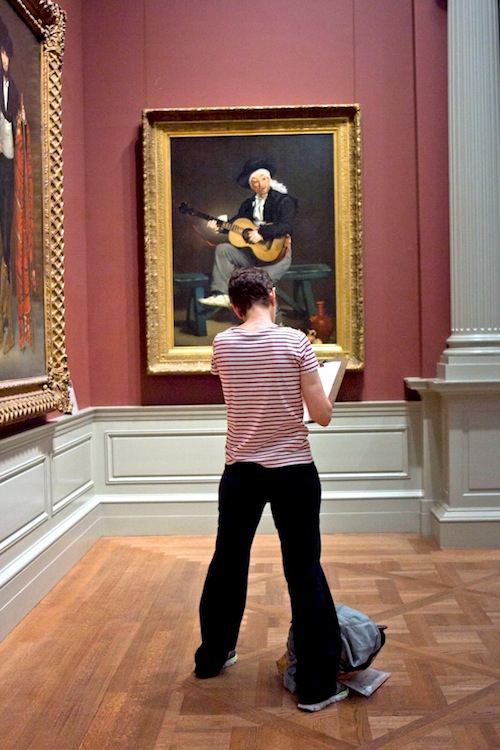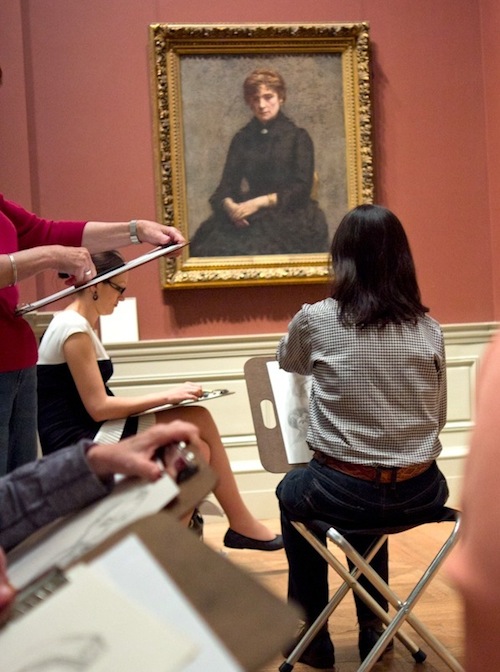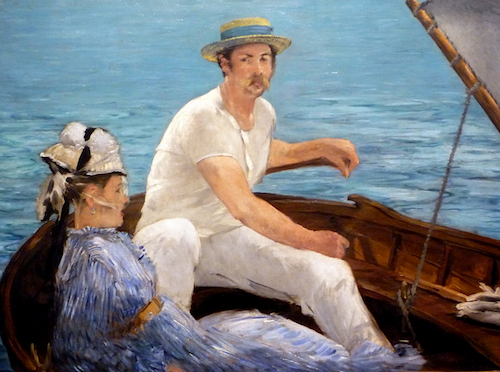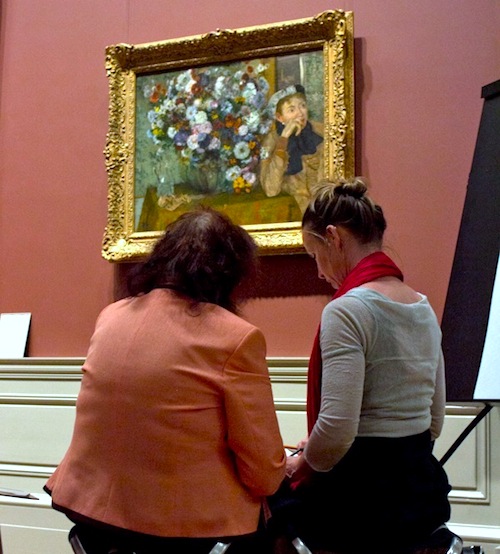
Drop-In Drawing at the Met
May 30, 2013

The
Drop-In Drawing program at the Met has been active for years. It works like this: twice a month, toward closing time, a group of people gather in one of the endless galleries and study an element of drawing together under the instruction of museum staff. There are two great things about this. First, you’re in one of the world’s preeminent collections of art for a purpose other than stroking your chin. And: “Drop-In” is literal. You don’t need anything. Folding stools, good paper, different pencils and charcoals, erasers, drawing boards—they’ve got it. If sketching after masters interests you at all, you have to search hard for an excuse not to come.

Mastery cloaks itself. Great works become more mysterious the more you look at them, and if nothing else, what you’ll get out of retracing an artist’s choices in line and shadow is a deepened respect. At a recent class we drew from Manet, and the painting I sat in front of, “Boating” (1874), was great for this. There doesn’t seem to be anything very complex happening in the sailor’s face. But it’s full of graceful observations. My sketch didn’t begin to come together until I realized that, unlike usually, there are no shadows under his eyebrows. There’s light. In fact, there’s sunlight. In fact, there’s the active, watery kind of sunlight, reflecting from the waves in front of him.

I liked how one instructor, Jessica Houston (below on the right), expressed this sudden connection you can feel with the artist. “Drawing opens up another kind of engagement with an object,” she says. “And I think in particular it kind of collapses time. Because you stand in the very same place that the artist stood when he or she made that work. It was a live thing. It was an activity. The painting is a trace of that.”













